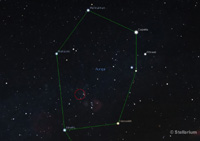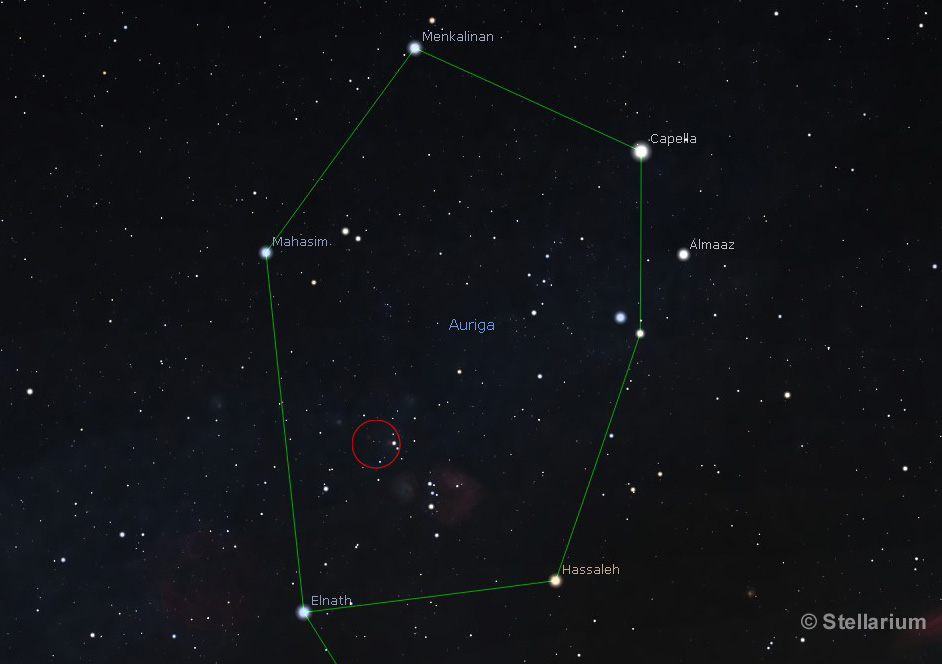Information...
The Spider & The Fly are two nebulae found in the constellation of Auriga.
On the right of the image, the Spider Nebula (IC417) is an emission nebula about 10,000 light years away & nearly 100 light-years wide. The region is illuminated by a few young massive hot blue stars. Ultraviolet lght from these stars ionise the surrounding clouds of hydrogen gas, which then re-emits visible light when the ejected electrons recombine with the hydrogen atoms.
On the left of the imgae, the smaller Fly Nebula (NGC1931) is both an emission and reflection nebula & is estimated to be about 7,000 light years away.
For more info. see the Wikipedia entires for the NGC1931.





